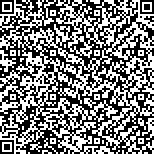本文已被:浏览 725次 下载 500次
Received:December 12, 2022 Published Online:March 20, 2023
Received:December 12, 2022 Published Online:March 20, 2023
中文摘要: 目的 评估烟雾病患者行血运重建术后并发癫痫的术前临床危险因素及其在预测术后癫痫中的潜在价值。方法 回顾性收集2016年6月至2021年6月在南京大学医学院附属鼓楼医院神经外科行血运重建术的145例烟雾病患者的临床资料进行回顾性分析。选取了年龄≥60岁、既往脑卒中病史、术前格拉斯哥昏迷评分(GCS)<9分、术前癫痫发作频率>1次/月、BMI≥24这五个临床危险因素作为研究目标。以灵敏度、特异度、阳性预测值(PPV)、阴性预测值(NPV)及约登指数(YI)为观察指标研究每一个临床危险因素及临床危险因素个数与术后癫痫发生率之间的关系及其诊断效能。结果 145例患者术后癫痫发生率为61.4%。发生癫痫与患者年龄≥60岁、既往脑卒中病史、术前GCS评分<9分、术前癫痫发作频率>1次/月和BMI≥24等因素相关(P<0.05)。在术后癫痫的预测中,既往脑卒中病史的灵敏度和NPV最高(87.6%,73.8%);术前癫痫发作频率>1次/月的特异度最高(75.0%);术前GCS评分<9分的PPV最高(78.4%)。具有全部五个临床危险因素的患者术后癫痫发生率为100%,且具备的临床危险因素越少,术后癫痫的发生率越低。五个临床危险因素特点全不具备的癫痫发生率为25.0%。具备三个临床危险因素的YI最大(52.3%)。结论 患者年龄≥60岁、既往脑卒中病史、术前GCS评分<9分、术前癫痫发作频率>1次/月、BMI≥24这五个因素在预测烟雾病血运重建术后发生癫痫方面良好预测价值,至少具有三个该标准的临床危险因素的患者可以考虑术后预防性抗癫痫治疗。
Abstract:Objective To evaluate the preoperative clinical risk factors of epilepsy in patients with moyamoya disease after revascularization and the potential value of these factors in predicting postoperative epilepsy. Methods The clinical data of 145 patients with moyamoya disease who received revascularization in the Neurosurgery Department of Nanjing Drum Tower Hospital from June 2016 to June 2021 were collected and analyzed retrospectively. Five clinical risk factors, age≥60 years old, previous stroke history, preoperative Glasgow coma scale (GCS)<9, preoperative seizure frequency>1 time/month and body mass index (BMI)≥24, were selected as the research objectives. The sensitivity, specificity, positive predictive value (PPV), negative predictive value (NPV) and Yoden index (YI) were used as observation indicators to study the relationship between each clinical risk factor and the number of clinical risk factors and the incidence of postoperative epilepsy and its diagnostic efficiency. Results The incidence of postoperative epilepsy in 145 patients was 61.4%. Epilepsy was associated with age≥60 years old, previous stroke history, preoperative GCS<9, preoperative seizure frequency>1 time/month, BMI≥24 (P<0.05). In the prediction of postoperative epilepsy, the sensitivity and NPV of previous stroke were the highest (87.6%, 73.8%); the highest specificity (75.0%) was found in patients with preoperative seizure frequency>1 time/month; PPV with preoperative GCS<9 was the highest (78.4%). The incidence of postoperative epilepsy in patients with all five clinical risk factors was 100%, and the less clinical risk factors, the lower the incidence of postoperative epilepsy. The incidence of epilepsy without all five clinical risk factors was 25.0%. YI with three clinical risk factors was the largest (52.3%). Conclusion The patient's age≥60 years, previous stroke history, preoperative GCS score<9 points, preoperative seizure frequency > 1 time/month, and BMI≥24 have good diagnostic value in predicting epilepsy after revascularization of moyamoya disease. Patients with at least three clinical risk factors of this standard can consider preventive anti-epileptic treatment after surgery.
keywords: Moyamoya disease Revascularization Epilepsy Clinical risk factors Stroke Glasgow coma score Body mass index Age
文章编号: 中图分类号:R651.1+2 R742.1 文献标志码:A
基金项目:国家自然科学基金(82271363)
引用文本:
